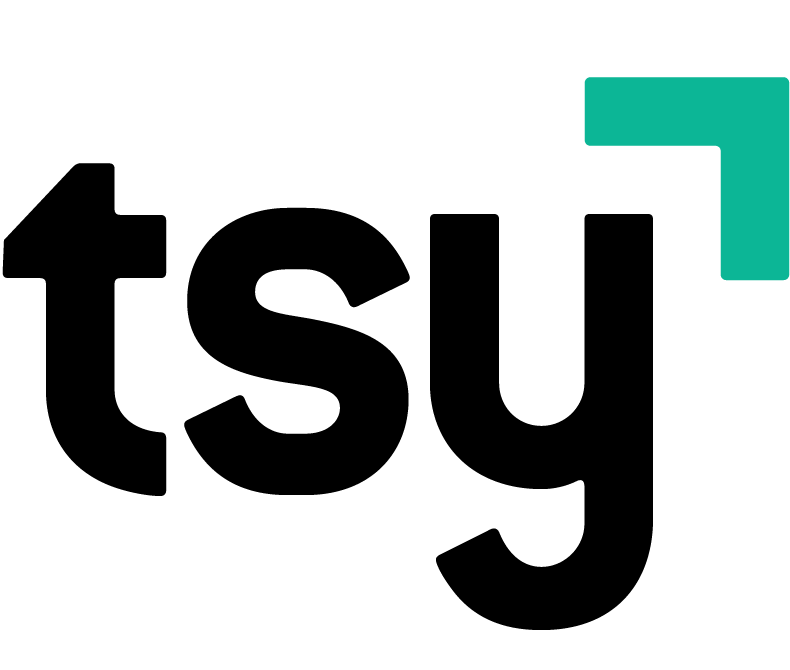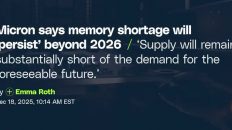Mentioned in Video:
- ARK Disrupt Issue #265 (April 21 2021, see section 3): https://ark-invest.com/newsletters/issue-265/
- ARK Invest's Big Ideas Report 2021 (see slide 11): https://ark-invest.com/big-ideas-2021/
- Transformers Comprise the Fourth Pillar of Deep Learning (James Wang, ARK Invest): https://ark-invest.com/articles/analyst-research/transformers-comprise-the-fourth-pillar-of-deep-learning/
- UiPath S-1 Letter to Shareholders: https://www.sec.gov/Archives/edgar/data/1734722/000119312521094920/d98556ds1.htm
- UiPath Q1 2022 Earnings: https://ir.uipath.com/news/detail/169/uipath-reports-first-quarter-fiscal-2022-financial-results
- UiPath Q1 2022 Earnings Call Transcript: https://seekingalpha.com/article/4433807-uipath-inc-path-ceo-daniel-dines-on-q1-2022-results-earnings-call-transcript
- UiPath – Robotics Process Automation: https://www.uipath.com/rpa/robotic-process-automation
- Should You Buy Coinbase Stock? | Why Cathie Wood Bets Big on Coinbase and Bitcoin: https://www.youtube.com/watch?v=SYVCc6V4HUY
- Support the channel and get extra member-only benefits by joining us on Patreon: https://www.patreon.com/tickersymbolyou
😲 #CathieWood put this stock in ALL SIX #ARKInvest funds: #ARKK, #ARKG, #ARKW, #ARKQ, #ARKF, AND #ARKX. This company had one of the biggest IPOs of all recent growth stocks, but how can it fit all of ARK Invest's themes? Does that make this one of the best stocks to buy now? Let's find out.
Video Transcript:
[00:00:00.000]
Skynet will one day be real, and this company is exactly where it starts. Probably. In a recent episode, I talked about ARK Invest's view on workers losing jobs to automation. Looking back, I realized I missed an important point. My goal was to identify all of the industries that could be disrupted by robots, dangerous jobs like arc welding, tedious jobs like warehouse part picking, and unpaid economic activities like unskilled farm labor, home cooking, and driving yourself around.
[00:00:29.190]
The thing I missed was the vast amount of jobs that could be replaced purely by software. So in this episode so I'd like to talk about a single company that could automate more work than all of the robots I just mentioned put together and grow by a crazy amount in the process. If you enjoy this type of commentary and analysis, consider liking this video and subscribing to the channel with all notifications turned on. That way, you'll be the first to know when I come out with new research, regardless of how YouTube tunes its algorithm. Let's get right into it.
[00:00:59.260]
UIPath, ticker symbol PATH is a software company that focuses on RPA, robotics process automation. UIPath defines RPA as a software technology that makes it easy to build, deploy, and manage software robots that emulate human actions interacting with digital systems and software. So let's start there. One thing UIPath does is make software bots that replace work being done by humans through automation. You're probably already familiar with certain types of online software bots.
[00:01:29.460]
For example, chat bots are the bots that you find in the bottom right hand corner of your browser on many websites today. The goal of a chat bot is to simulate a conversation with a human being, to answer frequently asked questions and direct you to useful resources, eliminating the need for a human employee to be doing that. Web crawlers are bots that access websites and gather contents to be indexed in search engines. Basically, they read every website they can get to and do things like figure out what's on it, how up to date it is, where it links to, what other sites reference it and how fast it loads, as well as many other things that help a search engine like Google know when to put it in front of someone.
[00:02:06.930]
Imagine giving that job to a human. UIPpath's bots are often used to manage simple but monotonous workflows like these. An example workflow for UIPath's bots could be parsing emails to retrieve data that need to be entered in a bunch of other forms and applications. Here's what Daniel Dines, UIPath's CEO, said in his S1 letter to shareholders, which you can find in the description below.
[00:02:29.310]
As the economy largely moved from manufacturing to services, the need for automation shifted from industrial to business process automation. But despite enormous gains in computing power at our fingertips, we witness a paradox.
[00:02:42.420]
While today's work is largely digital, the repetitive manual work has not disappeared. The form of it has simply shifted. Today's knowledge worker spends a vast amount of his or her time at work extracting, entering and processing data, and enduring the drudgery of continuously copying and pasting between a growing number of applications. Let me know in the comments below how much time you spend at work on repetitive manual tasks?
[00:03:07.200]
Is it something like 10% of your work day? 20%? 50% or more? Do you think some or all of those tasks could be automated? I'm excited to hear your thoughts. For me, this is the quote that made me realize my mistake from that previous episode. When I think about robots, my brain jumps to manufacturing and industrial applications.
[00:03:26.020]
When Daniel Dines thinks about robots, he's thinking about emails, spreadsheets and forms. Actually, he's thinking about a lot more than that. UIPath has developed an entire suite of tools for building and managing these bots, not just the bots themselves. Their platform incorporates different capabilities like computer vision and natural language processing, which lets people create more advanced automations with little to no code. As I mentioned earlier, the goal here isn't only to put an end to repetitive tasks, but to fully emulate human workers, at least in some roles, and that's where things get really interesting.
[00:04:01.450]
The introduction of the shareholder letter ends with this: while we are still in the early days of a multiyear journey to the fully automated enterprise, momentum is growing as organizations across the world only now are beginning to understand the power of automation. The idea of the fully automated enterprise is why I think this company is so attractive to ARK Invest. Let me walk you through what I think they ultimately see in UIPath when they look at least five years out. Each week, ARK Invest comes out with a newsletter called ARK Disrupt, where they highlight technological breakthroughs in bite sized chunks.
[00:04:34.140]
In issue number 265, which came out about a week before UIPath's IPO, ARK Invest talked about Open AI's GPT-3 language model, generating 4.5 billion words per day across over 300 different commercial applications. Here's the part that's relevant to UIPath. With 175 billion parameters trained on roughly 500 billion words, the model uses deep learning for a diverse set of text generation tasks. Given a list of ingredients, for example, GPT-3 can generate a recipe. Alternatively, it can serve as a chatbot, guiding customer support or turning text commands into SQL code.
[00:05:10.680]
ARK Invest's Big Ideas Report also talks about GPT-3. Here's a list of things this same AI can do: write emails, design web pages, write code in a dozen computer languages, retrieve historical facts, translate languages, diagnose diseases, talk like a therapist, and more. The same AI is able to do these things for the same reason a single human can do them because it's trained to understand language in general. And just like what the human the list of things this AI will be able to do in the future will continue to grow.
[00:05:41.460]
When I was in Grad school, the notion of a general purpose AI seemed like science fiction. It's cool to be talking about it for real just a few short years later. I'll leave a link to that issue of the ARK Disrupt newsletter and their 2021 Big Ideas Report in the description below as well. The reason I'm talking about GPT-3 is because that same big idea, a general purpose AI that's trained to understand workflows instead of language no longer seems so far out of reach. UIPath's vision of the fully automated enterprise could be realized even sooner than they expect, according to their latest investor presentation, that's around 2028.
[00:06:17.390]
The amount of artificial intelligence based automations and innovations UIPath offers has continued to grow exponentially year after year. What if they could build bots that discover the processes within an organization that can and should be automated? Software bots that build software bots to target the most monotonous jobs currently being done by humans? That's where I believe UIPath is headed. And Daniel Dines says as much in his shareholder letter. UIPath's mission is to unlock human creativity and ingenuity by enabling the fully automated enterprise and empowering workers through automation.
[00:06:52.120]
They currently have task mining and discovery tools in public preview, which they expect to release later this year. They're putting themselves in a great position to gather the mountains of data it would take to train that generalized workflow AI, allowing them to automate more and more processes for their existing clients and capture different types of new clients in the future. Just like Tesla is doing with millions of cars in thousands of environments and Teladoc is doing with millions of patients and thousands of medical conditions, UIPath could be doing this with millions of software bots across thousands of different workflows. Workflows that touch every kind of industry and innovation, from genomics to space.
[00:07:30.420]
That's how the same company winds up in ARKG, ARK Invest's fund themed around Genomics and ARKX, their fund themed around space exploration.
[00:07:38.940]
UIPath's total addressable market is just that big. Let's hope they never flip the switch and cause the robot uprising. I'm just kidding. Now that we have a basic feel for what this company does and where it could be headed, let's talk about their financials and the stock itself. ARK piled money into UIPath, ticker symbol PATH, the day they IPO'ed, which was April 21, 2021. Kathy Wood grabbed almost $200 million worth of shares on day one.
[00:08:06.790]
Roughly three weeks later on May 14, ARK's combined position in UIPath was over $400 million and as of last Friday, June 11, it was over $600 million, making it ARK Invest's 20th biggest position overall. That's almost the same level of growth as ARK Invest's now massive position in Coinbase, ticker symbol COIN, which IPO'ed just one week before UIPath, indicating a massive amount of conviction in the longterm performance of the company. If you want to see my analysis of Coinbase stock, I'll leave it in the top right hand corner of your screen right now and in the description below.
[00:08:41.100]
To me it's obvious that there is and will continue to be an insane amount of demand for robotics process automation. Every company wants to automate workflows and reduce unnecessary human labor.
[00:08:52.180]
The real question I have is whether UIPath can scale to meet that demand before its competition does. Now that they've released their latest earnings report, we can find that out. Let's start with the numbers in Daniel Dines's letter to shareholders. Their annual recurring revenue jump from $351 million to $580 million, a jump of 65%.
[00:09:12.900]
Their total revenue went from $336 million to 607 million, a jump of 81%. Their net losses went down from $520 million to $92 million, a reduction of over 80%. They had over 6000 customers as of January 31, 2020, including 80% of the Fortune Ten and 61% of the Fortune Global 500. As of January 31, 2021, they had just under 8000 customers, a jump of about 33%, while still including 80% of the Fortune Ten and 63% of the Fortune Global 500, meaning they're expanding their footprints and the total addressable market beyond industry Titans while having relatively little customer churn.
[00:09:56.310]
How is UIPath doing this?
[00:09:58.290]
UIPath is becoming entrenched in their customer base. That's the growth model. UIPath lands their clients and then expands. The company gets in the door and over time dramatically expands its business as it proves the value of the technology to the customer. UIPath's dollar-based net retention rate is 145%, meaning their customers increase their spending with UIPath by an average of 45% year over year.
[00:10:24.010]
That isn't just some on paper number. This is happening because UIPath grows as their customers identify and expand the number of business processes they can automate, increasing the number of robots deployed and the number of users interacting with those robots. Guess how UiPath charges its customers: per automation and per user. That's your exponential growth. So what about their competition?
[00:10:47.070]
Well it turns out there isn't much. Here's what Daniel Dines had to say during their most recent earnings call. Our leadership position in the RPA market is again demonstrated with our ARR growth, which increased by 64% year over year to $653 million while net new ARR had a record 72 million. We continue to grow multiples of the market and take market share. In fact, for 2020, IBC announced that UIPath ranked number one in RPA, capturing eight points of market share versus 2019. In Gartner's latest market share research, UIPath added more revenue in 2020, then their top nine competitors combined.
[00:11:26.790]
We believe that automation will be the next layer in the software stack, and we are not standing still as we continue to expand our competitive moat. Our ultimate product vision is for our user to not only automate existing processes but to design processes on our platform. Think about what he's saying here. Eventually, UIPath will become part of the foundational technology stack that companies are built on. And instead of automating existing processes, companies will be able to design them from scratch on UIPath's process automation platform.
[00:11:58.920]
This is a really big idea and the possibilities here are endless. Not all aspects of the earnings report were this great. The GAAP net loss was greater than expected at about $240 million, but the company had a positive Non-GAAP operating income of $16 million. This was the result of a massive stock based compensation of about $250 million, much higher than their revenue. I personally don't see this as a problem in the long term.
[00:12:24.730]
The company just went public and it's normal for high tech growth companies to compensate their talent pool through stocks. As long as we see this number shrink year over year, it's a non issue to me. I'll leave a link to their earnings report and transcript of their latest earnings call in the description below, but I think their exponential growth trajectory and market dominance is very clear. The enterprise robotics process automation market is just beginning, meaning the market itself is going to grow and UIPath is setting itself up to be very sticky, meaning clients will have to do a lot of costly work to switch to a competitor down the road.
[00:13:00.120]
A good rule to remember is when you're competing with an existing solution, your solution has to be much better to get people to switch.
[00:13:07.140]
If Tesla wants its full self-driving capabilities to hit mass adoption, it can't just be 5% safer than a human driver. It needs to be 50% safer if not much more. If another competitor comes in after that, they're trying to displace Tesla's market share, not just human drivers. The same is true for UIPath.
[00:13:25.250]
Their future competitors will need to show much more operational efficiency than UIPath's existing automations to get clients to switch. Not just that they're more efficient than human workers themselves. UIPath's business model of getting in the door, expanding their footprint and building deep trenches in their customers processes means that they're capturing more and more customers in that growing market and more and more of those processes per customer today. They already have stable recurring revenues of over 1100 customers spending $100,000 per year each and 100 customers spending over $1 million per year with them each.
[00:14:03.320]
In the future, they expect the fully automated enterprise market to be valued at $60 billion per year. But one thing I don't think a lot of people are talking about is the small and medium sized business opportunities as well as software bots for individuals. As their ecosystems increase and their costs continue to decline, I think their final total addressable market could be much bigger. I'd love to automate several different workflows in my own life, and I'd happily pay something like a $1,000 per year to do it.
[00:14:31.020]
In fact, one such automation is with a partnership they just expanded with Tableau. According to their most recent earnings report, UIPath and Tableau launched Tableau Activity, which allows customers to easily utilize data produced or retrieved by robotic automations in their Tableau reports and the UIPath extension for Tableau, which triggers a robot directly from a Tableau report or dashboard. Tableau, which is now owned by Salesforce, is a premier data visualization tool used in many different industries. It's also the tool in which I share my visualizations of ARK Invest data, like the ones I used to highlight how Cathie Wood loaded up on UIPath earlier this episode.
[00:15:10.160]
I spend about an hour a week updating these dashboards and another hour manually looking at the data in different ways.
[00:15:16.310]
I'm sure one of UIPath's bots could save me 100 hours a year inside Tableau alone, let alone the other spreadsheets I'm constantly putting together for this channel. I can't imagine how many hours UIPath could save some of its biggest clients over a year, and that number will only continue to grow. By the way, if you want to dig into ARK Invest's data for yourself, instead of hoping I cover something specific in a future episode, these interactive dashboards are now available to my patrons on Patreon and members right here on YouTube.
[00:15:45.620]
How's that for a smooth segue? But seriously, I hope this episode helped you learn a little bit about the growing market for robotics process automation.
[00:15:53.160]
UIPath is dominant and quickly growing position in that market. Why? It's the only company to be in all six of ARK Invest's actively managed funds and how it totally won't be responsible for the robot apocalypse. If I did, let me know by investing in the like button and subscribing to the channel with all notifications turned on. That's a great way to invest in the channel that invests in you. Until next time. This is Ticker Symbol: You.
[00:16:18.050]
My name is Alex, reminding you that the best investment you can make is in you.
If you want to comment on this, please do so on the YouTube Video Here














